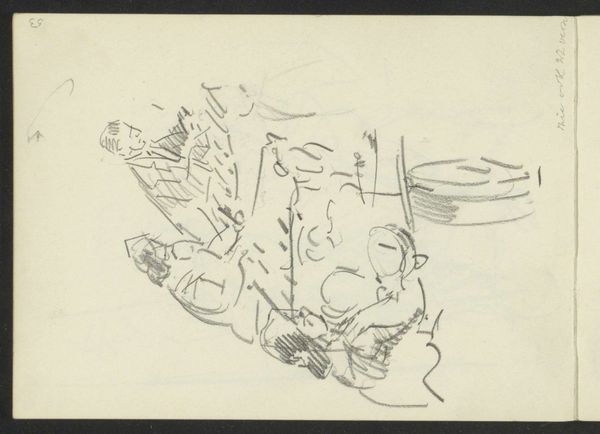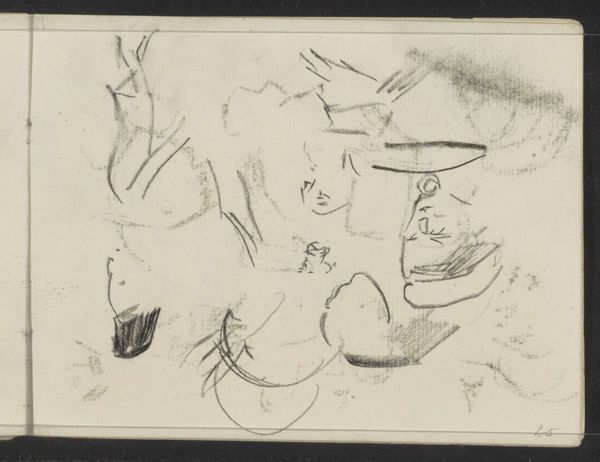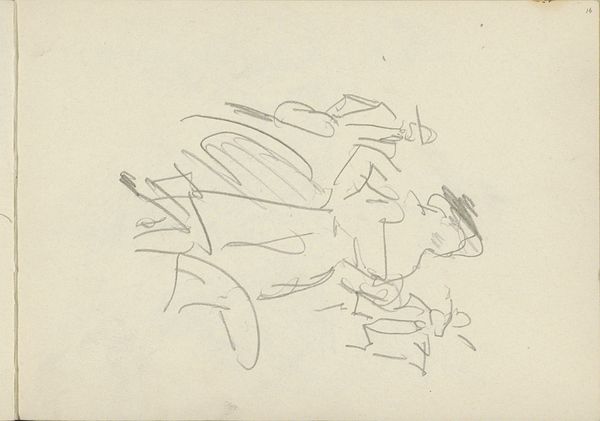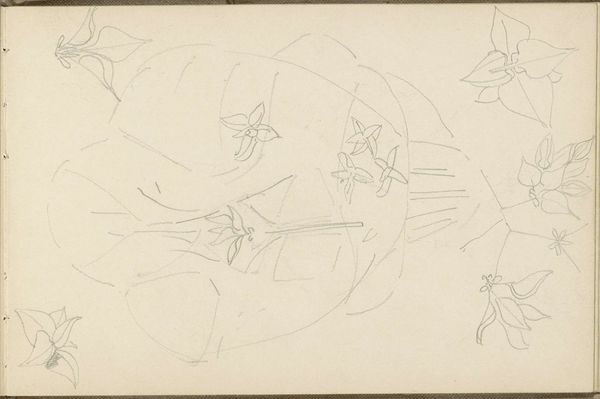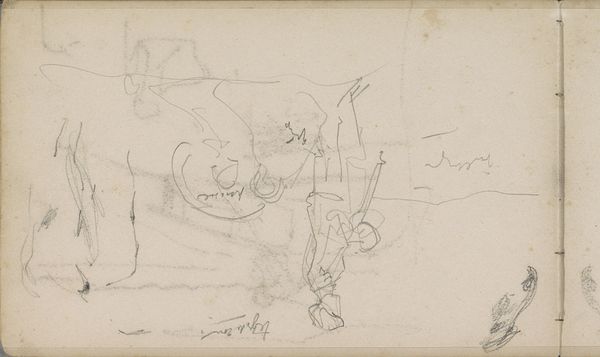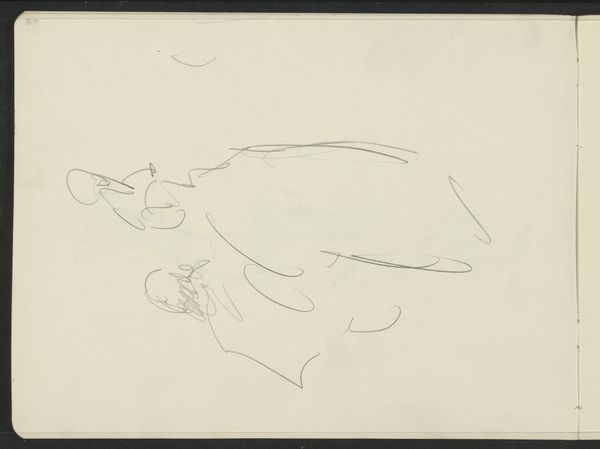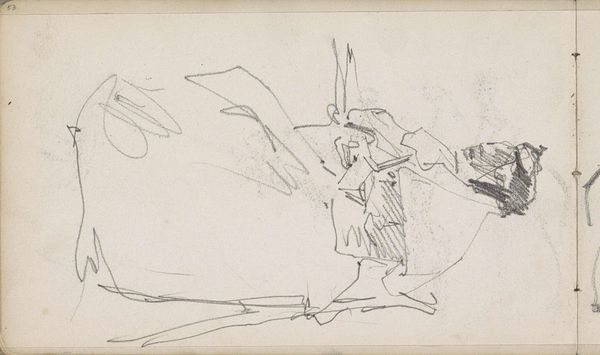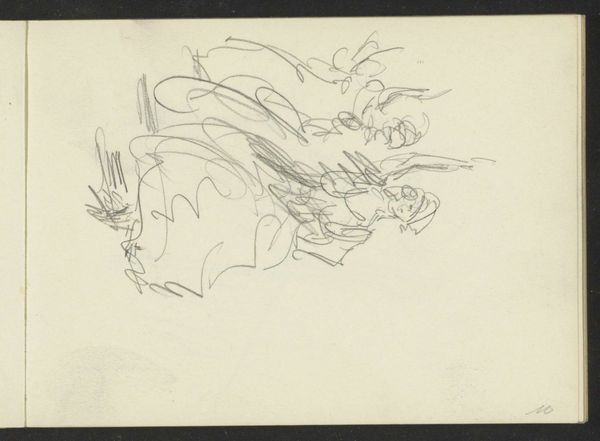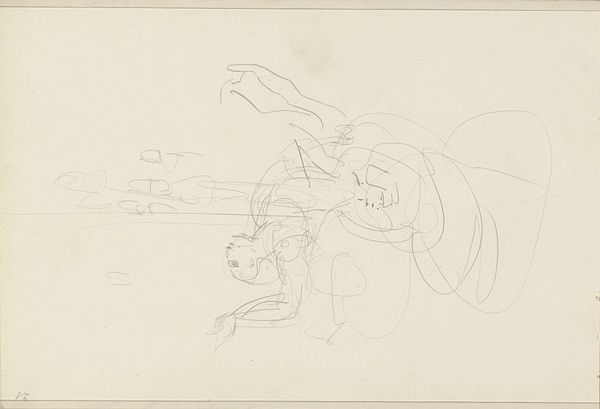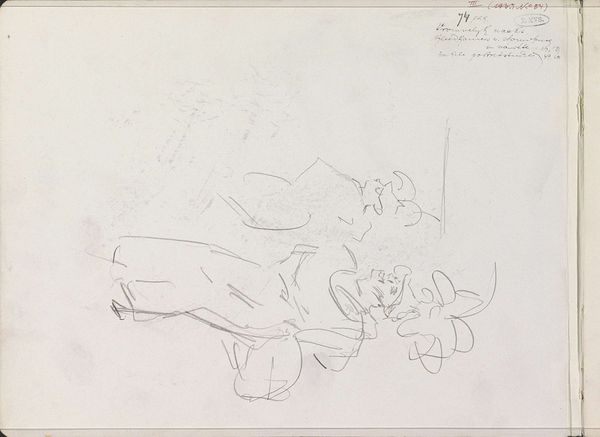
Copyright: Rijks Museum: Open Domain
Curator: This sketch, rendered in pencil and ink, comes to us from Isaac Israels, and it's titled “Drie vrouwen, mogelijk dansend," which translates to “Three Women, Possibly Dancing.” The piece dates between 1875 and 1934 and is currently held in the Rijksmuseum collection. Editor: The kinetic energy is striking; even though it's a quick sketch, you get the sense of bodies in motion. The lines almost vibrate on the page. Curator: Indeed. Notice the interplay of line and negative space. Israels's style emphasizes movement and the capture of fleeting moments, characteristic of Impressionism. How do you see that reflected here, editor? Editor: Look at how the artist suggests form through suggestion, rather than concrete outlines. This imprecision invites viewers to engage their imaginations and construct the scene themselves, echoing a very loose figuration that was developing into new forms of art at the time. Curator: The work seems typical of its time and artistic circles, representing the everyday, fleeting impression over academic precision, wouldn’t you agree? Editor: It is interesting to see these themes of movement and capturing a moment being captured at a time when Europe was undergoing its own seismic movements. I find it also offers the intimacy of a candid shot. You’re getting a peek behind the curtain, a study into an artist's process that they might never have meant to have on full display in a place like the Rijksmuseum. Curator: Do you see the themes represented by these women's depiction echoed anywhere else during the same period? How might a viewer compare their lives at that moment with their own lives? Editor: It prompts us to question the gaze: whose gaze does this piece represent, and what power dynamics might be at play? Is it truly egalitarian if certain figures have greater influence on our ability to create art in general? These are just some questions that jump to my mind, especially seeing it now within the museum institution. Curator: These considerations highlight the intersection of aesthetics and societal structures. I am interested to note that it is in a book with many other quick studies which invites more speculation. Thank you for illuminating a modern perspective on this compelling piece. Editor: And thank you; I leave with more appreciation for its complexity!
Comments
No comments
Be the first to comment and join the conversation on the ultimate creative platform.

